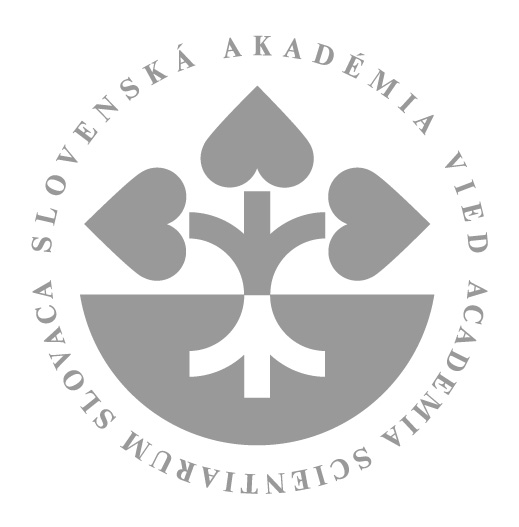Astronomical Institute of Slovak Academy of Sciences consists of these 3 scientific departments:
Solar physics
Observational facilities:
Stará Lesná Observatory – Horizontal solar telescope with spectrograph (d = 50 cm),
Lomnicky Peak Observatory – double 20 cm coronagraph (f = 4 m) with post focus instruments:
a) COMP-S (Coronal Multi-channel Polarimeter), b) SCD Solar chromospheric detector.
The research in Solar physics department is focused mainly on the magnetism, dynamics and variability of solar atmosphere. There are several research areas under investigation.
- a) study of the solar photosphere and chromosphere and active events in them, using modern spectro-polarimetric, spectroscopic and photometric observations acquired with top level solar telescopes base at the Canary Islands (GREGOR, VTT, SST, THEMIS), and with space-borne satellites under own joint observing proposals,
- b) study of the solar corona and structures in it (prominences, coronal holes, coronal condensations) and Sun-Earth relations using data acquired with modern infrastructure at our Lomnicky Peak Observatory, with space-borne satellites and from VSO – Virtual Solar Observatory (unique access to data from space- and ground-based observations of the Sun) and using data from solar total eclipses observations,
- c) study of evolution of fast and very powerful events in the solar atmosphere (flares, coronal mass ejections, active prominences, jets) using multiple observations from ground based and space-borne instruments,
Department of interplanetary matter
Observational facilities:
Skalnaté Pleso Observatory – 61 cm reflector equipped with CCD camera, 130 cm reflector with visual and infrared CCD cameras and a spectrograph (the telescope is also used by the Stellar Department of the Astronomical Institute and the Faculty of Science Pavol Jozef Šafárik University in Košice). The telescopes at the Skalnate Pleso Observatory are designed for CCD photometry and spectroscopy of asteroids and comets.
Stará Lesná Observatory – photographic and digital camera of the European bolide network, camera system for TV recording of meteors, two computing clusters for modeling of the dynamical evolution of the Solar System.
Main research areas:
We are studying the transition orbits among different populations of the small bodies in the Solar System – mainly regarding the near-Earth objects (NEOs). The results of photometry of asteroids are used to search for binary asteroids and modeling of their shapes. The investigation of activity and its influence on the physical and dynamical evolution of the selected cometary nuclei (possible candidates for near-Earth objects); the evolution of a cometary nucleus and its activity at large heliocentric distances are carried out. The distribution of meteoroid particles in the inner Solar System is described. The structure and dynamics of meteoroid streams and evolution of their parent bodies are analysed. The methods for separation of meteoroid streams from the sporadic background has been developed. A search for meteoroid streams of an asteroidal origin has been performed. The meteoroid population in the vicinity of the Earth’s orbit, including the mass distribution of particles in meteoroid streams and their background, the determination of the internal structure of streams, their aging and decay are investigated. In the cooperation with the observatory in Catania we are studying the surface properties of the interplanetary bodies. The study is performed in the laboratory conditions.
Stellar Department
Observational facilities:
Skalnaté Pleso observatory – 1.3 m (f/8.36) Nasmyth-Cassegrain telescope equipped with an échelle spectrograph, visual and infrared CCD camera
Stará Lesná observatory – two 60 cm (f/12,5) Cassegrain telescopes equipped with an échelle spectrograph and a visual CCD camera
Research of symbiotic stars and novae is focused on the physical processes during the outburst phase: jets, accretion, envelope shedding. Their modeling uses mainly multi-color UBVRI photometry and échelle spectroscopy obtained with AI SAS instruments but also from the international collaboration. The research of high-energy processes, the hot and the cold component requires data from large wavelength range. Therefore, satellite multi-frequency observations are necessary (IUE, HST, XMM Newton).
Research of eclipsing binary stars and multiple systems has more than 50-year tradition in the Stellar Department. It is focused on the precise determination of the orbital elements, absolute parameters of the components, their rotation, but also at the circumstellar matter (discs, mass flows). Simultaneous modeling of the photometric, spectroscopic and interferometric (VLTI, ESO) data is used to arrive at reliable parameters.
Extrasolar planets is a relatively new research area in the Stellar Department. The study focuses on search for planets around young stars and search for circumbinary planets (YETI and Dwarf projects). In addition to the observations obtained with the instruments of AI SAS, the data from satellite missions Kepler and MOST as well as the data from the ESO instruments are used. Of primary interest is modeling of peculiar objects (e.g., planets with a comet-like tail), the planet-parent star interaction and the processes in close-in exoplanet atmospheres.
 SAS
SAS

